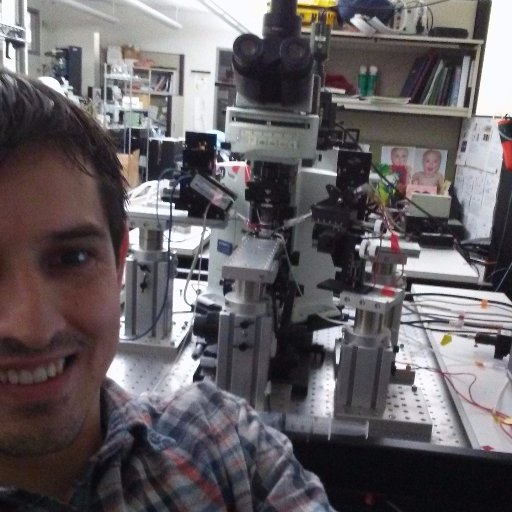
Tarun Kamath
@TVKamath
Followers
168
Following
167
Media
0
Statuses
26
MD-PhD student @harvardmed, former Undergraduate and Master's student @MIT
Boston, MA
Joined May 2019
Excited to share some of my PhD work out today in @NeuroCellPress! We use our novel lifetime photometry system with the new dLight3.8 sensor to study hunger induced changes in exploration and risk assessment derive from AgRP modulation of dopamine signaling in tail of striatum.
Our latest led by @TVKamath with important contributions by collaborators including Nao Uchida, Mitsuko Watabe-Uchida and @LinTianPhD Hunger modulates exploration through suppression of dopamine signaling in the tail of the striatum: Neuron
4
6
33
This work was a significant collaborative effort with Naoshige Uchida, Mitsuko Watabe-Uchida, and @LinTianPhD. Working with such talented people was an absolutely amazing experience and excited for folks to learn more about our work.
0
0
3
It's been wonderful to contribute to this important work on using fluorescence lifetime imaging to deeply understand dopamine dynamics. Hoping people are excited to adopt this technology for their own use cases!
Our fluorescence lifetime photometry at high temporal resolution (FLIPR) paper is now online at Neuron. FLIPR allows for fast (10Hz-1 kHz) and slow (min-hrs) measurement of absolute neuronal signals in freely moving mice. We highlight the utility by measuring tonic and phasic DA.
0
0
2
Excited to share our preprint on how dopamine neurons perform the key calculations in reinforcement learning! https://t.co/vbPZCkjPCj
3
19
44
Awesome elegant work by Shun and the whole team!!
Can synapses in the brain switch their signs between excitatory and inhibitory during learning🚦? Can they act more like weights in artificial neural networks, able to switch signs based on experience 🔃? Excited to share my thesis work in @blsabatini lab! 🧵 ⬇️ (1/13)
1
0
0
Where does Alzheimer’s begin in the brain? Our new study in @NeuroCellPress reveals that earliest changes start deep in cortical layers 5/6, selectively affecting parvalbumin interneurons via reduced NPTX2 & GluA4. Restoring NPTX2 reversed deficits.
cell.com
Papanikolaou et al. show that deep-layer cortical neurons exhibit abnormally prolonged Ca2+ transients early in Alzheimer’s mouse models. This is linked to suppressed activity and altered tuning of...
6
65
231
Congrats to Kim Reinhold, soon to launch her own group in the Eaton Peabody Labs, on this labor of love. Basically, she shows that the visually recipient zone of the striatum mediates outcome-dependent trial to trial updates of behavior. https://t.co/kDSBN1yRdf
nature.com
Nature - Activity in the striatum is necessary for trial-to-trial improvements in learning sensory–motor tasks but not memory recall.
7
16
103
Our latest work, published in @CellCellPress, identifies a rare soluble #tau species in human #Alzheimer’s brain that suppresses CA1 complex-spike bursting, a hippocampal neuronal firing pattern that is critical for learning and memory. https://t.co/l4wLYQTHcK
cell.com
In mouse models, tau impairs neuronal complex spike bursting and associated network processes in hippocampus CA1 alongside CaV2.3 downregulation. Soluble high-molecular-weight tau species drive these...
4
14
50
Our paper has been published @NatureGenet! Through new statistical methods, we shed light on fundamental questions about cellular response to genetic perturbations. Our work is a substantial advance towards rigorous characterization and comparison of massive perturbation atlases.
How do genetic perturbations change cells? How are these effects shaped by cell type and dosage? How do we best extract insight from modern massive perturbation atlases? Im pleased to share a new preprint where we develop a suite of statistical approaches to these Qs (link below)
6
23
125
I’m thrilled to share our preprint presenting MORSE: a new way to simultaneously and quantitatively track patterns of neuromodulators/neuropeptides in vitro & in vivo using spatially multiplexed 3D imaging of 10+ green optical sensors on a microendoscope. https://t.co/MpIiMo1MHN
2
11
62
So thrilled this is out in preprint! It's been a true pleasure to contribute to this project led by @lodder_bart to develop and implement a novel system for high speed, accurate fluorescence lifetime measurements of absolute dopamine fluctuations in mice.
This is something we are very excited about. @lodder_bart led this development project collaborating with @LinTianPhD lab. The technology makes lifetime photometry easy and, with the new dopamine sensor, allows measurements of phasic and tonic DA in vivo https://t.co/lbG8luTgeV
0
0
3
Excited to share work from Twitter less Juan Enriquez-Traba, grad student from the lab. Juan and the team demonstrate that dopamine regulates differential aspects of reward, motivation vs reinforcement, via co-expressed D3 and D1 receptors https://t.co/4LwCIb8c0a
18
31
116
🎉Exciting news! Our latest work on Glioma-Innervating Neurons has just been published in PNAS!🔗 Read the full article here: https://t.co/wwNgoY5Ewd A huge thank you to my co-mentors @blsabatini, @HaigisLab and co-authors. @MGHNeuroOnc @MGHCancerCenter @MGHNeurology
pnas.org
Gliomas are the most common malignant primary brain tumor and are often associated with severe neurological deficits and mortality. Unlike many can...
1
9
26
So excited to see our @NatRevClinOncol review come together! Thrilled to share insights on T cell dynamics in neoadjuvant ICI-treated HNSCC patients. Huge thanks to @DrUppaluri for your incredible mentorship and for all you’re doing to change the field!
Congrats to @MaryannZhao on leading this @NatRevClinOncol review of #scRNASeq studies on #Tcell dynamics in #neoadjuvant ICI treated #HNSCC patients! @HeadNeckMD @DrHaddadRobert @jdschoenfeld1 @rbryanbell
1
5
14
4/4: Overall, this work has been a really incredible experience. So much thanks to my mentor @blsabatini and our collaborators @naoshigeuchida and @LinTianPhD. Any and all feedback on the project is greatly appreciated!
0
0
4
3/4: This change in exploration seems to derive from the activity of AgRP neurons in the hypothalamus which suppress the release of dopamine in the tail of striatum to permit greater risk taking and exploration.
1
0
3
2/4: We used a novel object exploration task to test how hunger changes the exploration behavior of animals. We found that hunger restructures animal behavior and makes them explore a novel object more, as many before us have seen.
1
0
2
1/4: Intuitively, we can all understand that when animals (including humans) are hungry, they spend more time exploring their environment and take more risks, probably to find food. We wanted to understand the neural circuitry that underlies this behavioral change.
1
0
1
The first piece of work from my PhD has now been uploaded to biorXiv! Short 🧵below:
Hunger modulates exploration through suppression of dopamine signaling in the tail of striatum https://t.co/73YFPgs3i4
#biorxiv_neursci
7
16
57
My work from undergrad/Masters in the Hyman lab is out. We looked at differences in the kinetics of tau aggregation in an in vitro bioassay. Huge thank you to everyone at the Hyman lab especially @simsdujardin for amazing couple of years!
Kamath et al. report differences in the kinetics of tau aggregation accross individuals in brain samples from sporadic Alzheimer patients. https://t.co/P7TZRc9FLY
@simsdujardin @analiese_f @MGHNeurology @MGHNeuroSci @MGH_RI @harvardmed
2
3
21
















